Why not window insulation?
In a well-insulated house in a heating climate, the windows have to be the biggest heat loss. The rest of the building envelope is R30 or more, but windows are R2 or R3. Moveable window insulation (for instance, window quilts or insulated interior shutters) can make a big difference. However, the only things I’ve seen are clumsy retrofits. It’d seem like an obvious feature to build in to a new house from the start. Why isn’t it done?
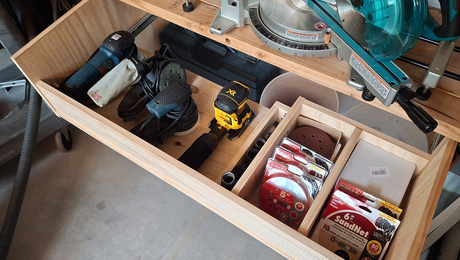
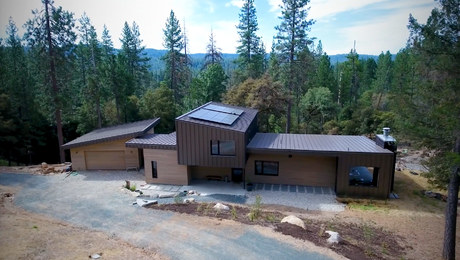


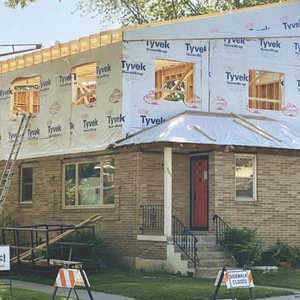
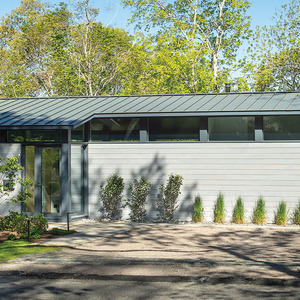




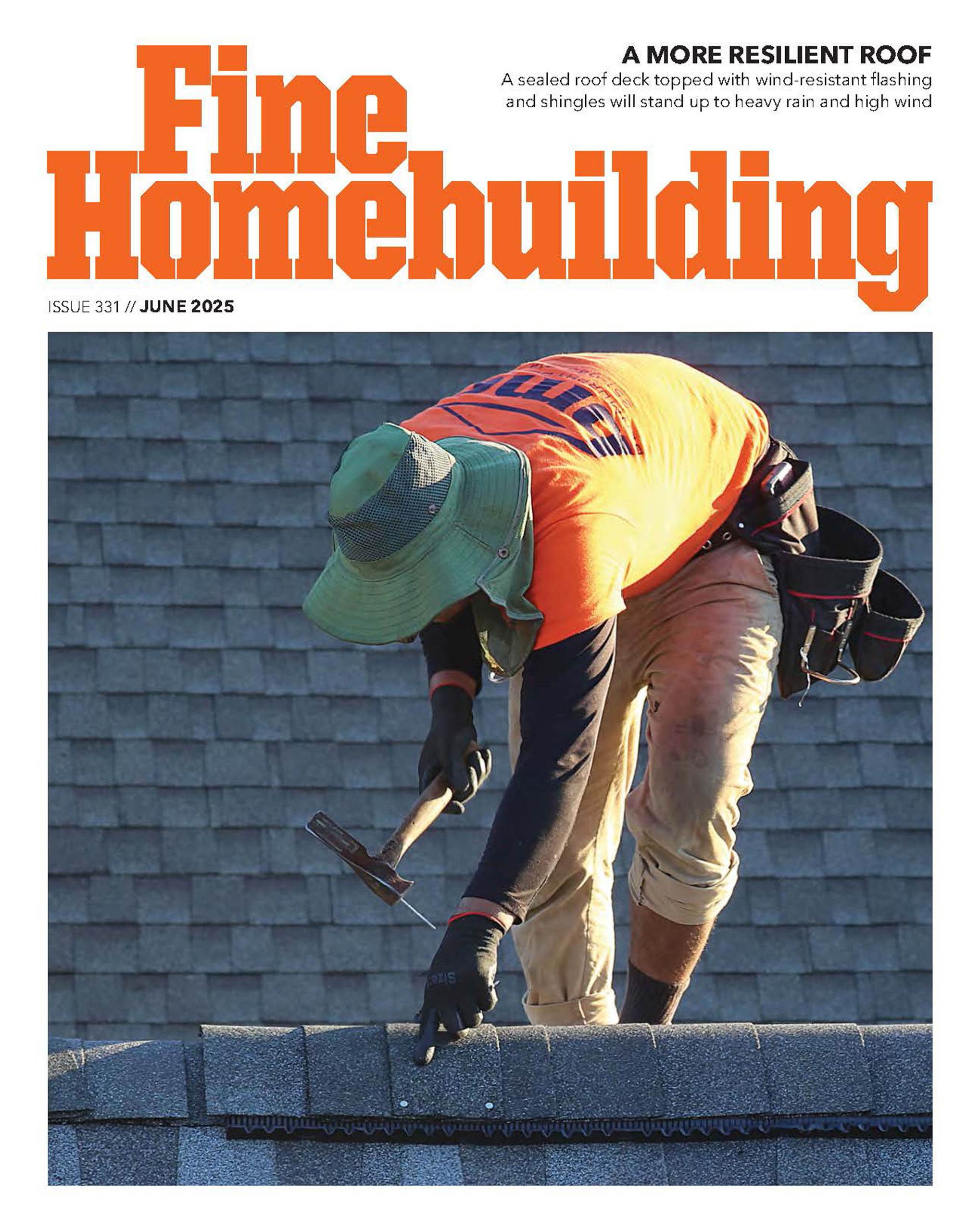








Replies
A creative fellow I know once built sliding pocket wood shutters that recessed behind some built ins when open. They had a foam core, and formed a tight seal. I'm sure they took a long time to engineer and build. Woodworking art. Very cool.
Building something on a roller into the walls (like window quilts) might be an engineering possibility.
Even heavy drapes can make a difference.
Realistically though, in most cases convective losses in the structure far exceed radiant losses through glass. You get to the point of diminishing returns, and the cost/benefit ratio goes underwater.
Building something on a roller into the walls (like window quilts) might be an engineering possibility.
No rollers, but T. Jefferson (Monticello) had inside shutters hinged such that they looked like a part of the wall. Not exactly a new idea.
We, on the other hand, have 450 sq ft of glazing without any window coverings. Seriously considered it, but built a house where the heat penalty is easily affordable instead. Our diurnal temp swing is usually 2º without any covering. PAHS Designer/Builder- Bury it!
This summer I made window insulation from Reflectix (foil covered bubble wrap) to stop huge amount of radiant heat thru my second floor windows. They made a big difference, particularly on a southern facing skylight. Easy to install and rolls up for storage. I figger I will probably use the stuff during real cold Chicago nites as well, have to wait and see.
Somebody ought to make window shades with a radiant barrier, I'd buy them.
Edited 9/20/2005 10:04 am ET by Norman
Buxton,
In my house (when finished ) there will be 42 windows. Some are large picture windows and many don't have easy access to them (dormer windows in the great room over 25 feet up. for example).
When we wake up in the morning it would take a lot of time to deal with each window. A minute a window and we are talking about 42 minutes plus walking time plus easily another 42 in the evening to close/cover them all..
Considering the size of some of the windows the bulk of a shade/ shutter/ panel etc. would affect the the room style etc.. and removing each covering and storing it someplace could easily take hours to accomplish..
It's not all loss, We get solar gain from windows and eliminate the electric costs of lights during the day..
I use few windows on the North side even though there is great views in that direction since there is no solar gain and poor light on the north side..
I do have slightly better numbers since I use two layers of thick (1/4") low E glass and dramatically increased the thickness between the layers Plus I have stained glass on the inside for a third layer on many windows.
Your point is well taken though.
The 1/2" airspace between thermal unit glass panes is optimal for vertical windows, not just done for fun or because somebody liked the 1/2" as a standard. Making the space between panes larger actually INCREASES the heatloss rather than decreasing it. It has to do with the mechanics of natural convection in the gas between the panes.
Your stained glass panel acts as a third layer of glazing, which would help. It would help more if it were sealed into a thermal unit with the other two layers of glass with a 1/2" air space between it and the other two.
If you've taken care of convective losses as best you can, windows definitely are the next biggest source of heatloss. They're also essential to the enjoyment of a space though.
Any reader here will also know that studs bridging directly between sheathing and drywall are another big source of heatloss/heat gain that can be eliminated without affecting one's enjoyment of the house. This can be eliminated without using that much extra material or labour either (depending on what method you choose to do it).
Moltenmetal,
Are you sure about that? I read that the airspace is a function of glass thickness and while the typical window glass calls for about 1/2 air space thicker glass as I used called for greater depth.. least the company that assembled my glass told me that and I read the article in their waiting room while my glass was being made..
They did point out the deminising returns of this though and for giggles the example they had was 1 inch thick glass with slightly over a 2 inch air gap only raised the R value of the window one point.. Seems I read that glass block has an R value of something like 3 which seems to verify the other article..
Yes I agree about conductive heat loss thru studs,, I used SIP's to eliminate the problem but you could also double wall things and offset the studs to eiminate conductive heat loss..
Three reasons:
-- Anything besides some sort of multiple-layer glass obstructs view/light.
-- The things tend to be ugly and poorly integrated into the rest of the room decor.
-- They often cause additional condensation and water damage.
(and yet another reason)
-- They cost money, and home buyers would rarely consider them worth the money up front (though they likely will later, when they have cold rooms and high heating bills).
To me the big one is the loss of natural light in the dreary winter when you need it most. If it makes you turn on lights in the daytime, are you really saving more energy than the lights use?
In Scandinavia, it's customary to have electric lights just inside all the windows. Maybe there's something that feels right about always having light coming from a familiar direction.
So, I'm wondering if there might be some kind of foam plastic material that would let some light thru and still have a big R advantage?
-- J.S.
Dan H,
Aerogel is just starting to become available. Translucent and R-20 per inch!
http://images.google.com/imgres?imgurl=http://eetd.lbl.gov/newsletter/cbs_nl/nl8/images/Aerogel_flame.gif&imgrefurl=http://eetd.lbl.gov/newsletter/cbs_nl/nl8/Aerogel.html&h=288&w=216&sz=23&tbnid=ax86XmJV3nIJ:&tbnh=109&tbnw=82&prev=/images%3Fq%3Daerogel%26hl%3Den%26lr%3D&oi=imagesr&start=3&ei=kwgxQ5udGrO4apbUtUo&sig2=VZm05kFBPkXgf0vsCvUd_w
Do you know any more about this?(aerogel)It looks like it would make a good interior storm windowif you can buy it in sheets.
If I had moveable window insulation in a house, I'd expect to use it at night in the winter, which is when there's the biggest heat drain through the window. There's also little to see outside, so closing the insulation obscures nothing.
DanH's point that the things tend to be ugly and not integrated into the house is true of most of the retrofits I've seen. That's why I was trying to focus on new construction. It seems to me that if they were designed in from the git-go, they wouldn't like DanH describes them.
Frenchy's point about the time required to open and close the insulation is a real point in his house. However, we now have motors and thermostats and timers and such. We trust them to run complicated HVAC systems, and they should be able to handle closing the insulation at night, and opening it at dawn.
Buxton,
if you had the wealth of Bill Gates you too could have a computer open and close windows according to usage automatically. For the average person automatic window curtains would be either hopelessly expensive (since they would literaly need to be customized for each window) or very unreliable.. One size fits all would not work very well since the power requirements for a picture window would be significantly higher than a small bathroom window..
The idea of say sliding panels or some other fixed coverig conjures up all sorts of storage bulk issues..
I don't see any reason that an insulation-opener needs to be particularly high power. The insulation itself doesn't weigh very much; it is mostly air. The insulation can open slowly, so a low-power motor geared way down would do the trick. I should think a one-size-fits-all approach would work.
And yes, storing movable insulation is a key issue. For instance, I've seen DIY schemes for panels of rigid foam insulation which fit in window openings. Where do those get stored? I dunno. However, consider the window quilt concept. A quilt which is quite thin can double or triple the glass window's r-value. It could be wound on a roller above the window, inside a valence or a soffet. It could be made to work, and I think be made to not be too obtrusive.
Of course, I'm inventing a product here. That's expensive, and one-of-a-kind systems are likely to be unreliable in service. My frustration is that I think in the present energy marketplace, some companies should have invented this sort of thing, debugged it, and made it affordable.
Actually, the motion-control part of the product almost exists. Several manufacturers (among them Makita) make systems for opening and closing conventional draperies. Some of them are X-10 compatible, which means that they can be remotely controlled by a central house computer. The part that these systems don't cover is the issue of sealing the drapes around the edges. Conventional drapes don't add much r-value. They just form a reverse chimney. Warm air enters at the top, is cooled by contact with the window, and falls out the bottom.
Buxton,
Well I like your thought process if not your solutions (thus far) I'm responding not to show you that you're wrong but to bring forth some of the problems which need to be overcome before this could hit the market place..
Yes I'd certainly be a potential customer..
Anyway one problem with roll up shades is the drag that would happen as the shade comes down. You would need to seal the edge of the shade or cold air will simply go around. Thus every window width and length would need to be accomidated.. Your shade would need both a track to work off of and some way to prevent racking (one side coming down faster than the other). Really difficult to do, not from an engineering perpective but from a practical cost perspective. In addition women (who select most of the shades and window treatements) are hyper critical of bulk. While some will accept bulk if tastefully done (and their interior designer tells them that it's tastefull) The vast majority of women will rather pay higher heating bills than have something they don't percieve as attractive.. (look at High heels, skirts in the winter, low cut dresses etc.)
while the power requirement could be dealt with by gearing as you suggested, by the time you accomidate the weight and drag of a large window either the gearing differential would need to be giant (leading to bulky packaging) or the power requirements would be high..
I wasn't aware of Mikita's systems, I'd assumed that must such systems were custom designed and made and thus subject to all sorts of engineering potential problems.. I guess I'll need to do a little research..
A friend of ours has a lot of that x-10 automatically controlled stuff. It's great for making the house look lived-in while you're away. But it's a bit unnerving to have stuff happen automatically around you while you're there. He sometimes has to get up from dinner to turn the lights back on, because he forgot what was programmed. ;-)
-- J.S.
You make some good points.A problem you didn't mention is that of heat buildup. Down here in Florida a South facing window can strain the AC with its gain. Placing insulation is a god idea but it is entirely possible to convert the space between the insulation and glass into an oven. I have seen one case of melted plastic window blinds. Had a distinct Escheresque flavor. I can only assume that had the cover remained in place longer and the sunshine been a bit stronger the window unit itself could be damaged, particularly if it is a plastic based model.I have read that this problem may not be isolated to south of thee Mason-Dixon. So even in the snow bunny north some circumspection may be a good idea.I'm all in favor of anything that can conserve energy because energy conservation yields manifold returns. It saves the homeowner money, helps the balance of international payments and fuel mot burnt is pollution and greenhouse gasses not released.On the up side I feel it would be best for the US, long term, if gas prices hit and stayed at $4 a gallon and energy remained high. A long term burden tends to promote behavioral, mechanical, vehicular and technological changes if, and only if, the strain is sustained. If the prices fluctuate it will tend to promote people becoming nostalgic and believing that prices will come down and so avoid any changes.This is like an infatuation where a strong, clear and unequivocal rejection is painful but tends to allow the person to move on. A mixed message tends to promote unhealthy fantasies of the love interest 'coming around', stalking and emotional stagnation. Energy prices being painfully high and staying there would provide a clear and unequivocal rejection of our previous profligate ways. A good thing. For then we can move on.
Yeah, even in the Frozen North (and especially on a winter day, since that's when the sun is low in the sky), heat can build up behind a storm door and cause damage. Any sort of plastic decoration or lite frame will turn into a melted mess.
> Had a distinct Escheresque flavor.
Are you sure it's Escher, or Salvador Dali?
Escher was the one with gravity going all different directions and birds morphing into fish. Dali had the limp clocks drooping over the edges of tables and other melted type stuff. ;-)
-- J.S.
We were tiling a bathroom floor on a house here in Michigan and on the outside, the vinyl siding had melted--the sun hitting the reflective glass on the windows was being directed to the siding at a corner and was hot enough to melt it!
Window quilts are the only commercially available solution that I've found. Since they are sealed on the edges, and have a vapor barrier, condensation won't be a problem. http://www.1windowquilts.com/product.html
I've tested triple cell cellular blinds with a track, and condensation is a big problem. Even if you don't get direct water damage, like with a vinyl window, you eventually get mold. They didn't seal well enough around the edges and didn't have a vapor barrier. The convective leakage is the larger of the two condensation-causing mechanisms.
The Passive Solar House Book by Kachadorian shows a good design for a rigid interior shutter, but they would have to be custom made.
Your right, by the way that the windows are the largest heat losing element. My home has R-26 walls and R-50 attic insulation. The Lo E fiberglass windows amount to 17,000 Btu of the home's total 32,000 Btu/hr design heat loss.
Any vertical glazing that faces south will have a yearly net energy gain with no window insulation. So if you aren't going to open the window insulation daily, then you're better off with nothing on the south windows. The south windows also will not add to the summer heat load if there is a small overhang. East and West windows are the real culprits in the summer. The window insulation on the those windows helps, but exterior shading is the most effective. Reflective films are better than tinting, but neither work as well as the exterior shading.
Edited 9/21/2005 3:08 am ET by DenverKevin
My wife made window quilts for the kids' bedroom many years ago. Not perfect, certainly, but not too bad in the condensation dept, and fairly easy to open/close.
DenverKevin,
your numbers intregue me. Where did you find the net heat gain in windows to the south? does that work for all climates even here in the frigid north?
A good discussion of window types, orientation, and performance is in the book Residential Windows http://www.amazon.com/exec/obidos/tg/detail/-/0393730530/104-2204223-1827154?v=glance
However, it hasn't been updated since 2000. Lots is happening in the field.My point about net gain for south facing windows is true for sunny, cold climates. At some point, cloudier climates are better off with window insulation applied during all periods of no sun. The manual opening/closing of window insulation twice daily isn't for everyone.To repeat, the only real choice right now ishttp://www.1windowquilts.com/product.html
What about those euro windows with the closable slats on the exterior. They are all over the place over there. Some are like louvers and some are roll down.
They have been discussed here before. Try a search.
Mike
Trust in God, but row away from the rocks.
I've looked at those European exterior roll-down things. The manufacturers are kinda vague about added r-value, I think because they don't seal well around the edges, and because there's gaps between the slats. It's a pity, because putting the added insulation outside the glass would solve the condensation worry. I think they're primarily useful for protection against high winds, like hurricanes.
Having even a poorly sealed layer outside the glass can add significant R value. The problem is simply that reliably calculating how much is pretty much impossible.
DanH --
You say "Having even a poorly sealed layer outside the glass can add significant R value."
Can you back that up with numbers, or a range of numbers, or a reference I can read? What I really want to know is "do those European roll shutters improve the window enough to justify the cost?" And, of course, "How do I know?"
Edited 9/21/2005 7:26 pm ET by Buxton
Can't really back it up with anything firm. Generally the shutter will encompass a fair amount of the frame, and the sash seals, and leakage through these areas is a non-trivial part of window losses. The shutter is especially helpful as a wind barrier, significantly reducing air pressure from wind gusts and thus reducing infiltration.The only really reliable way to quantify the savings, though, would be with real-life measurements in the midst of a cold spell. If (as I suspect would be the case) you see 20-30 degrees differential across the shutter on a -30 (ie, 100-degree differential) day, that's going to translate into 20-30% less conductive heat loss through the window. Draft losses are probably harder to measure.
I seem to recall that in one of his houses, Frank Lloyd Wright had some windows that had fiberglass insulation between two panes of glass. No view, of course, but allows some light in. Aerogel, as one poster wrote, is a good answer.
I think that's how Kalwall works?
I think Kalwall consistes of big water-filled tubes that store and release heat. But light does pass through them.
Wood has a higher R value than glass- Why not just make them out of 2" thick clear fir?
> Why not just make them out of 2" thick clear fir?
OK, if you can come up with fir that's clear enough to let light thru.... ;-)
-- J.S.
Kalwall's a big name in fiberglass panels. Sometimes single sheets turned into tubes for adding water mass, sometimes assembling translucent sandwich panels which have some steel wool-looking white fibers between the faces. Pretty sure the fibers are primarily to prevent convection currents. R value is somewhere around 5.
Here are some 2 3/4" thick ones I'm recycling:PAHS Designer/Builder- Bury it!
Well, I'll be...only knew of water filled Kalwall tubes. Mistaken yet again!
Always good to learn something new...
I have 2-3 dozen of the tubes (8') too, if you have any interest. Our house is already extremely high mass so I haven't figured out what to do with them. The roof panels went on my lumber shed and tractor sheds (to be built). Real nice to have the extra light inside. Incredibly expensive new, but did you notice that span? 8', where we build for a 50 psf snow load.
Strong recommendation to grab any that might come your way. A few of mine had slight hail damage, the reason for replacement.PAHS Designer/Builder- Bury it!
If I lived anywhere near you I'd see if i could get some of the panels from you. Don't know where the original poster of this thread (Buxton) lives, maybe he'd be interested.
Thanks for the thought, but they're pretty well spoken for here. Started with 2300 sq ft of them. By the way, even 4'x8' panels are an easy 1 man transport to the roof, maybe 30-40 lbs. It's the water tubes I don't know quite what to do with. Here're some panels inserted in a copper roof a couple months ago over my lumber shed:PAHS Designer/Builder- Bury it!
couple years ago in "Mother Earth New" i saw a window that was a double paine window that blew strofoam balls in bewteen the glass panels. then removed during the day by a vaccumn.
Interview with Steve Baer (Zomeworks):
Well there's Dave Harrison's bead wall. I teach some classes at the University of New Mexico and Dave was one of my students and he came up to me one day and said, "Hey, I've got this idea for building a wall out of two panes of glass. During the day the sunlight can go through the glass and you can blow styrofoam beads between the panes at night to insulate the wall."
http://www.motherearthnews.com/Alternative_Energy/1973_July_August/The_Plowboy_Interview__Steve_Baer PAHS Designer/Builder- Bury it!
And now 30 years later no one has ever perfected the idea. They never worked very well mainly because of all the static electricity.
I'm pretty sure these are (or were) available commercially. I think they were too complicated and expensive for the relatively small benefits. Most could be accomplished with triple glazing and IR-reflective coatings.
A couple of thoughts to consider;
When you start using something reflective, you will have the window manf. in an uproar. That heat will be reaking havoc to their glass and warranty. I know Andersen is adamant that you not use anything on their windows;films,tapes,or even Rain-X. I would check with them before you 'try' a new technology.
Second, wouldn't we be better off putting something outside the window to stop the heat/cold from getting to the window rather than waiting until it's already in. While this is inconvenient, it could be more attractive (if done wisely) than what it would look like inside no doubt. Another benefit became apparant when we had all those tornadoes a month ago. Wouldn't it be great to be able to have some sort of exterior protection to your windows when there's stuff flying at your house at 100m.p.h.+. Kind of like a shutter but one that insulates, too. How about a rollup garage type door right above the window that can be dropped electronically? Hide it in the trim. No need to go outside to close them. People in California could even use them for wildfires.
Lastly, how much would it cost to recover what you are losing?
If you are designing and building your own home look at "Thermal Shutters and Shades" by Shurcliff.
If can be done well and save a bundle.
My wife and I live in a small 1100 sq. ft. house with a sunroom. In winter we place cloth covered RMax inserts into the window frames and french doors at night. We have very low heating costs.
For most people it's not on the radar. Heat has been cheap and putting them in and taking them out is too much work to do.
Thermal shutters will definately be on my future solar home.
I have that Shurcliff book. It is a nice compendium of ideas. However, it was published over 25 years ago! As far as I can tell, little has been published since, and there are no commercial products which address the issue. Hence the (frustrated) title of this thread....
Good ideas are timeless.Thermal shades are more problematic than thermal shutters.
nearly air tight to keep convection air currents from negating positive effects.Condensation and mold problems are a greater issue with shades. There is also the overheating issue if
the shades are not raised before the sun hits them. Thermal shutters can greatly reduce these issues. Many homes have decorative shutters why not make them
useful? To work well the thermal shutters must also exclude air infiltration. The thermal shutters, the closing hardware,
the window frame and the sealing mechanism, would have to be carefully designed and executed for the greatest benefit.The biggest drawback for most people would be manually closing and opening the shutters. The expense of motorizing
the shutters could be very high.
Plus getting shutters to work reliably in freezing weather could be a challenge.